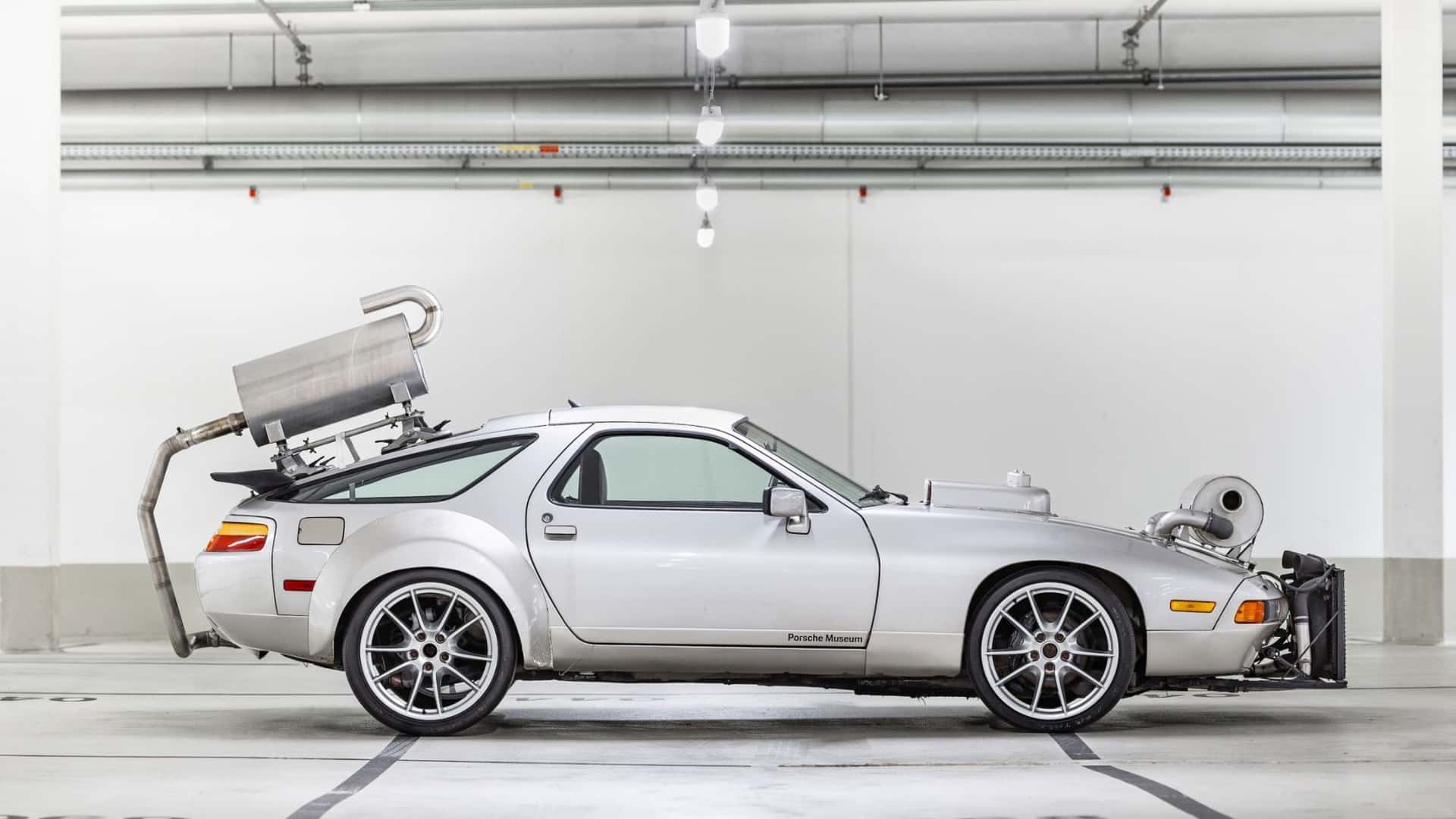
HERE'S WHY THIS PORSCHE LOOKED SO WEIRD
The unique contraption was at one point wrapped in cotton wool.
Building a car that must meet increasingly stringent legislation is hard. Automakers must take into account not only emissions and safety regulations but also specific criteria pertaining to noise levels. Making sure cars are not too loud is particularly tricky for companies specialized in performance vehicles. These tend to have louder exhausts as well as wider tires, which are typically noisier.
In the late 1980s, Porsche had to build this contraption to make sure its sports cars wouldn't be too loud. Based on the 928, this one-off prototype started its job in 1989, right when Back to the Future Part II hit the big screen. In an alternate universe, Dr. Emmett "Doc" Brown would've driven this instead of the DeLorean DMC-12. We reckon the odd machine from Zuffenhausen would've also blended perfectly in a dystopian action film such as Mad Max.
Porsche 928 noise test car / Götz von Sternenfels
While Doc's time machine used a stainless steel body like the Cybertruck, Porsche wrapped the vehicle's body in cotton wool. Doing so helped the engineers isolate and minimize the noise sources of the engine, intake, and exhaust. The idea behind this 928 was to evaluate the noise levels of different tire compounds. That's why some of the car's guts were repositioned outside of the body.
Indeed, the radiator was placed ahead of the front bumper while those two ungainly hood scoops hosted a pair of fans to cool down the engine. The large barrel slapped onto the hood is where the intake process took place, with cables connected to the perfectly enclosed engine bay. Let’s just say that outward visibility was not a priority.
The view through the rear window was even worse since the custom exhaust featured a huge muffler stuck onto the glass. The dual curved exhaust pipes were hand-welded and extended to the highest point of the car, pointing toward the rear. As for the bulging wheel arches, those were added so that the 928 could accommodate different types of wheel and tire combinations. In its current form, the low-profile rubber wraps an alloy wheel from a previous-generation 911.
But why did Porsche choose a 928 in the first place? Because an air-cooled 911 was simply too loud for the job. The 924 was also ruled out because the engineers wanted a car that had plenty of power in the lower rpm range. The 944 was not fit for the task either due to its "gearbox rattle at low loads," according to Porsche mechanic Harald Mann. He's been with the company for 40 years, most of which were spent on the test benches to evaluate noise levels.
Porsche 928 noise test car / Götz von Sternenfels
Initially, Porsche tested the car on the existing skidpad but its surfaced changed in time and the company had to improvise. An "external noise measuring track" was built using standardized asphalt to exclude variables and obtain more accurate results. The 928 was fitted with slick tires and its noise levels were measured at a low 63 dB during the standardized flyby test at 31 mph. When the test was done, the legal limit was much higher, at 74 dB.
This 928 may be an ugly duckling but it perfectly illustrates the form follows function principle. The rolling test bench helped Porsche make its cars quieter, which may seem counterintuitive, but it had to be done to pass noise level regulations. After more than three decades of service, it now rests at the Porsche Museum in Stuttgart.
Photos: Götz von Sternenfels
Source: Porsche
2024-06-26T07:41:53Z dg43tfdfdgfd